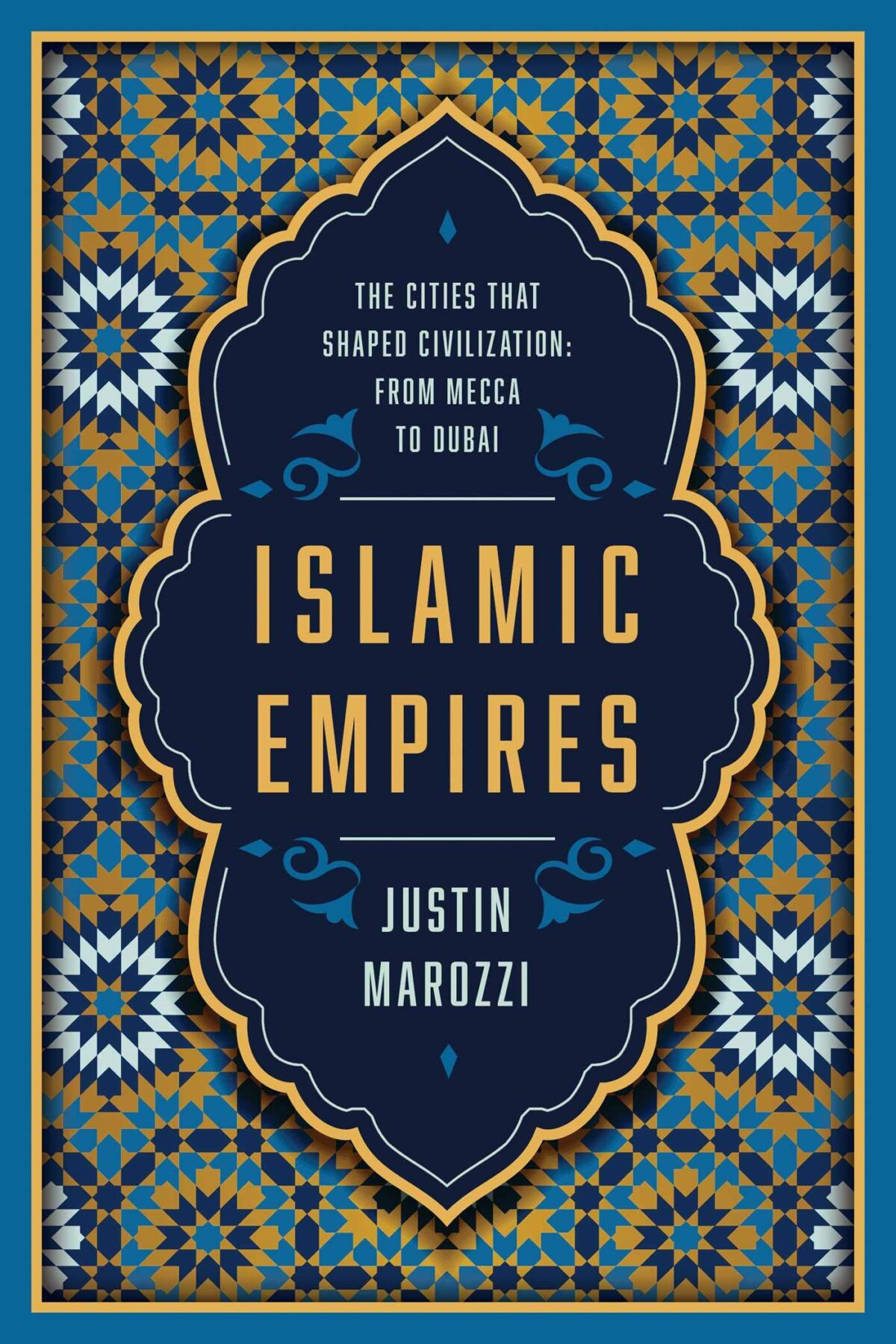Marozzi, Justin. Islamic Empires: The Cities that Shaped Civilization, from Mecca to Dubai. New York: Pegasus, 2019.
Ever since my first exposure to serious history of the Muslim world in my freshman year of college, I’ve had a minor fascination with the Christian world’s Near Eastern nemesis and foil. Some of that must admittedly come from my own latent Orientalism and the allure of the unfamiliar, yet I also think a good deal of my interest stems from how little the history of medieval Middle East is taught and discussed in a world in which the area has assumed such international attention. Justin Marozzi’s Islamic Empires seemed an obvious pick, then, combining this interest with my professional preoccupation with imperialism in any time period. While the information contained within its pages was certainly educational, I couldn’t help but feel disappointed in its muddled direction and refusal to push forward in the analysis its subject matter openly suggested.
Islamic Empires tells the history of the 15 centuries of Islam’s existence through the eyes of its successive empires and their capital cities. Each chapter covers one century and focuses on the city that in retrospect was the most powerful and influential Islamic center during that century. A fine format, and one through which I looked forward to receiving details of the foundation and layout of cities and their mother empires. Unfortunately, Marozzi never quite figures out which part of his title he wants to emphasize. In other words, I often found myself wondering if this was a history of 15 Islamic cities or a history of the Muslim world through those cities. The answer, by the time I finished, was neither. The typical layout of a chapter illustrates the problems: an opening anecdote of the modern city, the history of the city up to the century of focus, a brief discussion of the physical city, a much more extensive discussion of its empire, and then no more than a page relating the history of the city after the focus century. For some, this works nicely; Mecca, Fez, and Tripoli, for example, each had moments of significance before receding into (relative) obscurity. For others like Damascus, Cairo, Istanbul, Kabul, or Baghdad, however, this elides centuries of further history and import. The ratio of city-to-empire also varies significantly. The streets and structures of Mecca, Damascus, Baghdad, and Cairo are all discussed in detail, but Kabul’s chapter is essentially just a platform for a summary of Timur’s conquests, while Istanbul’s chapter is simply a detailed account of the siege and capture of Constantinople.
Marozzi’s choice of subject matter, too, is odd. In his introduction he admits that he could not examine every significant city in Islamic history, but offers no compelling reason for why he chose minor cities like Fez, Tripoli, or Beirut over such giants as Delhi or Jakarta, especially considering that the majority of the world’s Muslims today live east of Iran. His final four cities (and Jerusalem), it also bears mentioning, were not themselves even the capitals of empires, the supposed premise of the book! Marozzi’s extensive personal experience with these cities, seen most commonly through those opening modern anecdotes, also began to pull Islamic Empires into the arena of a travelogue at times, though thankfully devoid of any Western-gaze Orientalism through his admirably abundant use of native voices, both historic and modern.
For all its organizational spasms, Islamic Empires actually sparked my biggest critiques in its last two chapters: Dubai and Abu Dhabi. The rise of these cities from inconsequential fishing villages to glittering metropolitan hubs of business and (relative) tolerance in the Middle East, each in scarcely more than half a century, is an intriguing prospect, and as Marozzi detailed the efforts of each city’s ruling family in building their empires of business and architecture, I could not help but another city, miraculously raised from the sands to be the new capital of the Abbasid caliphs in the ninth century: Baghdad. The deeper Marozzi went, the more these affluent playground cities’ tolerance seemed similar to that of early Islam as well: policy when necessary to maintain minority rule, yet always at risk of being broken for personal gain or once the power of the ruling class was no longer jeopardized by large numbers of non-believers. Marozzi, unfortunately, fails to make any of these connections. Instead, he takes the opposite approach: a tone of admiration and marvel, even after mentioning the use of near-slave labor in these cities’ construction and other humanitarian concerns. I couldn’t help but wonder if perhaps pushing unsavory analysis and comparison to medieval methods in print might be taboo for someone who wishes to return to Dubai and Abu Dhabi.
While I couldn’t help but discuss my reservations here at length, Islamic Empires is, in its final accounting, a solid history of the Muslim Near East since the life of Muhammad through to the present day. Whether discussing the high imperial politics of the day or illuminating the lives and environments of everyday people, Marozzi provides a compellingly readable account of cities too-infrequently discussed in Western schoolrooms. Even dedicated historians might find something of interest in his pages, but those seeking cutting edge analysis must unfortunately look elsewhere.
